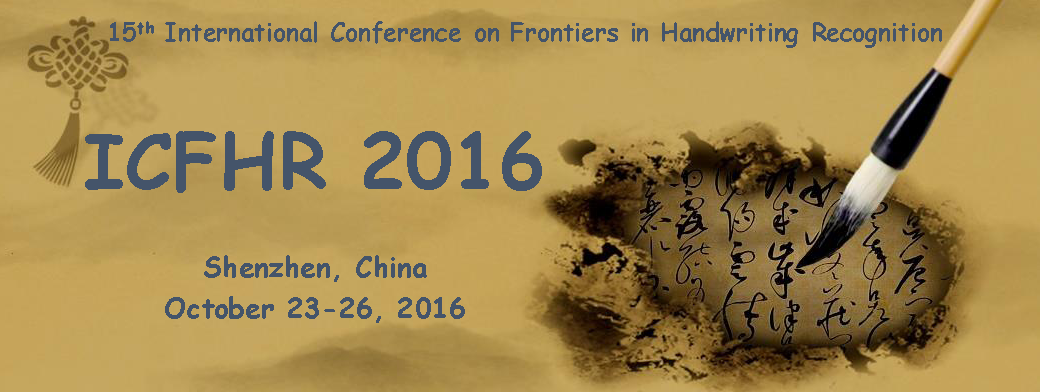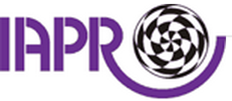| Tutorials |

Totally two tutorials will be given on October 23, 2016.
Tutorial 1: Forensic Document Examination: state of the art and open issues
The tutorial aims at introducing the state of the art and the open issues in the field of forensic document examination from the perspective of pattern recognition. We will introduce the audience to the context for Forensic Document Examination from the perspective of both Forensic Expert and Pattern Recognition specialists in order to highlight the major challenges to be faced for designing and deploying system and tools to be used by forensic experts in their casework, and introduce a taxonomy for categorizing the methods and the algorithms depending on whether they follow a traditional pattern recognition approach or rather exploits information derived from the handwriting generation process. After the general introduction, we will focus on the two main applications, signature verification and writer verification/identification, as well as on the emerging realm of multilingual documents. We will review the features proposed for describing the trace of the handwriting or the process that originates the trace and the criteria adopted for making the final decision. For each, we will summarize the main characteristics of the methods and algorithms proposed in the literature as well as the issue that still lack a (better) solution. Eventually, the panel section aims at discussing among the speakers success and pitfalls in using pattern recognition methodologies and tools by Forensic Experts. The ultimate aim of the tutorial will be that of raising in the audience the relevance of the topic as well as to encouraging new research in the field.
[Location]: Second Floor
[Schedule]:
09:00 - 09:45 Forensic Document Examination: a taxonomy (A. Marcelli)
09:45 - 10:30 Performance evaluation: dataset and assessment (M. Liwicki)
10:30 - 10:50 Coffee break
10:50 - 11:40 Signature verification: state of the art (D. Impedovo)
11:40 - 12:30 Forensic scientist's view of signature comparison and evaluation (A. Marcelli)
12:30 - 14:00 Lunch
14:00 - 14:45 Writer verification/identification: state of the art (M. Liwicki)
14:45 - 15:30 Multilingual document: state of the art (M. Blumenstein)
15:30 - 15:50 Coffee break
15:50 - 16:30 Open issues (A. Marcelli)
16:30 - 17:30 Final discussion with the participants
Tutorial 2: Deep Representation Learning for Handwriting Recognition
The dependence on representations is a general phenomenon. There's no doubt that the choice of representation has an enormous effect on the performance of machine learning and pattern recognition algorithms. However, for many tasks, it is difficult to know what features should be extracted. Representation learning motivates to discover not only the mapping from representation to output but also the representation itself. Learned representations often improve the performance than the hand-crafted representations. They also allow the software agents to rapidly adapt to new tasks, with minimal human intervention. Deep learning presents an appealing solution in the way by introducing a hierarchical representations where complex features are expressed in terms of other, simpler ones. Deep learning has already proven useful in many disciplines, name a few, computer vision, speech and audio processing, natural language processing, robotics, video games, search engines, online advertising and finance. Handwriting recognition is one of the quintessential fields leveraging deep learning. This tutorial is intended to provide such instruction on established methodologies and practices through four major parts. Firstly, it provides a concise overview of deep learning eco-systems. The growth history and justification of deep learning are given. Secondly, great effort is made on three popular deep learning models, that is, deep autoencoders, deep convolutional neural networks, recurrent neural networks. Their architecture, learning and inference process, and technical basis are detailed. Also the strengths and weaknesses of these models are briefly identified. Thirdly, advances in deep learning software infrastructure are introduced and three popular deep learning toolboxes are examined. The covered toolboxes include Theano, Caffe and MXNet supporting and shaping many important research projects. Finally and most importantly, three selected applications are closely studied covering a broad range. Those case studies demonstrate the entire picture when crossing deep learning and handwriting recognition together.
[Location]: Third Floor
[Schedule]:
09:00 - 09:45 Overview of Deep Learning in Handwriting Recogniton (G. Zhong & T. Su)
09:45 - 10:30 Deep Learning Models: Deep Belief Networks (G. Zhong)
10:30 - 10:50 Coffee break
10:50 - 11:40 Deep Learning Models: Convolutional Neural Networks (T. Su)
11:40 - 12:30 Deep Learning Models: Recurrent Neural Networks (T. Su)
12:30 - 14:00 Lunch
14:00 - 14:45 Deep Learning Toolboxes (G. Zhong & T. Su)
14:45 - 15:30 Deep Learning Applications: Semantic Representation Learning (G. Zhong)
15:30 - 15:50 Coffee break
15:50 - 16:30 Deep Learning Applications: Character Recognition based on CNNs (T. Su)
16:30 - 17:30 Deep Learning Applications: Handwritten Text Recognition based on RNNs (T. Su)
[Presenters]:
Tonghua Su, Associate Professor, Harbin Institute of Technology, China
Guoqiang Zhong, Associate Professor, Ocean University of China


